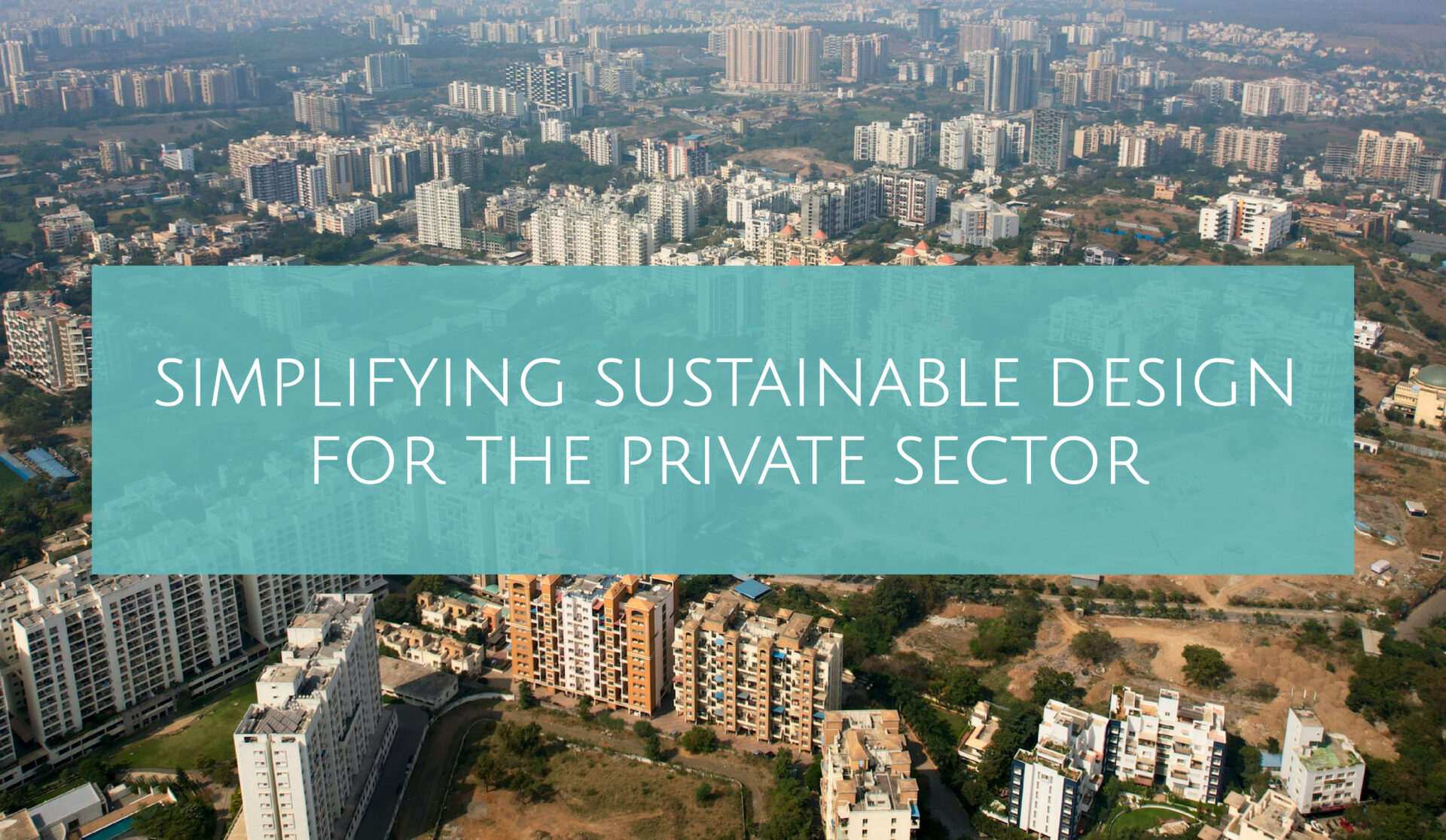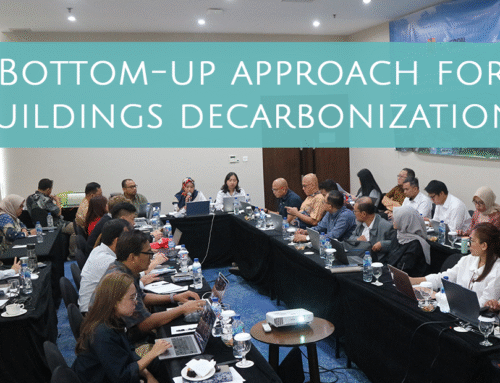As India swelters under the relentless heat wave, poorly designed homes become more unsafe than the outdoors, especially in the affordable housing sector. Climate-inappropriate homes threaten health and safety, leading to increased mortality, chronic illnesses, and domestic strife. They also drive a surge in inefficient air conditioning use, exacerbating power demands and greenhouse gas emissions (GHG).
Engaging the private sector becomes essential as the country urbanizes rapidly, and private developers play a big part in the expansion. Design charrettes is one of the most practical and effective ways of engaging with the private sector. Charrettes help de-risk the development cost effectively for high-performance housing solutions. Companies can build the capacity to replicate these solutions across other development projects.
But how can we get the sector on board?
Poor energy efficiency is one of the biggest contributors to GHG emissions from the building sector. Climate-appropriate designs are often overlooked in affordable housing. But these are hardly primary concerns for a price-sensitive market and profit-oriented industry. But what if you tell a developer that their development will be better than their competitors, or can provide many benefits to the buyers with little or no extra cost? That can catch their attention, says Girisha Sethi, Senior Architect and Researcher at Ashok B Lall Architects.
 “Energy efficiency and embodied carbon of construction might not be a motivating factor for developers but the social value of the project can be. Co-benefits can become a part of their marketing strategy,” said Ms Sethi.
“Energy efficiency and embodied carbon of construction might not be a motivating factor for developers but the social value of the project can be. Co-benefits can become a part of their marketing strategy,” said Ms Sethi.
“Design charrettes (DC) are a highly effective way to bring these benefits to developers’ attention and integrate them into their projects. Through design charrettes, we support developers of affordable housing to incorporate GBPN’s low-carbon, healthy homes design guidelines into their projects.”
Design charrettes refer to an intensive, focused period of design activities where architects, developers and often other stakeholders collaborate to solve design challenges. There are broadly two approaches to how charrettes work, said Gautam Nagar, Country Manager, India.
“The top-down approach is when the policy has been made and then it needs to be implemented or tested out in a development.
Or the builders are not sure how to implement this policy. Design charrettes are then done to support implementation or testing.” Mr Nagar said.
“The bottom-up approach is when the policy is yet to be made. You will suggest recommendations to the builder to incorporate sustainable building practices. Once the development is completed, this becomes an evidence base for the policy makers that this is doable, it becomes proof of concept. Both ways work and are a cost-effective way to engage the private sector.”
So what makes design charrettes so effective?
One of the primary reasons is that recommendations that are specific to the development project can be generated. For example, insulated walls are thought to help keep heat out and ensure thermal comfort in homes. But that’s not always true, said Ms Sethi.
“It depends on multiple factors and most importantly the climate. In a place like Mysuru let’s say, insulated walls may keep the heat out, but also trap the heat that is already inside the house in a warm-humid climate. This was an observation we found in one of our recent design charrettes for a private developer. It was seen that ventilation played a more important role for thermal comfort than wall insulation”
Another reason is the collaborative and integrated planning that happens at a charrette. Charrettes encourage holistic thinking by bringing together the whole team – architects, engineers, MEP consultants, marketing and others. This integrated approach ensures that sustainable practices are considered from the outset, influencing all aspects of the design, construction and sales process. “Collaborative design can also identify opportunities for resource optimization, such as efficient land use, water conservation, waste reduction, and improved energy management. This can lead to cost savings and enhanced environmental performance,” Mr Nagar said.
But to ensure that the recommendations are followed, charrettes must be conducted in a strategic way.
“The intent of the developer needs to be aligned with the purpose of the charrette, even before the charrettes start. When sustainability goals and targets are set collaboratively, private builders and developers are more likely to buy into these recommendations,” Ms Sethi said.
“The involvement of the decision-making leads in the charrette process helps ensure that sustainability measures align with their business goals and capabilities, increasing the likelihood of implementation. The developer must be on board, and so must be their whole team.”
Timing is another important factor for the effectiveness of charrettes.
“If the project is already in the post-design stage or the construction has already started, then it becomes difficult for passive design strategies to be incorporated. The proposed recommendations then either become impossible to be incorporated or become highly costly. That’s not an ideal way to conduct charrettes.”
Cost is also a major factor. The recommendations should be simple and not fundamentally change the layout plans. Any additional design interventions should be at little cost but that can deliver bigger results. This is important because ultimately developers need to make profits, but they also need to enhance the social value of the project. Buyers are increasingly becoming aware of thermally comfortable and climate-appropriate buildings. They might be willing to pay a little extra, but not too much in a price-sensitive market like India.
In the end, it is about how much value you can add to the development project, said Ms Sethi. “Our charrettes are unique because while most charrettes look primarily at quantitative aspects of energy efficiency, our recent charrettes have additionally looked at the holistic health and well-being of residents, incorporating both quantitative and qualitative measures. This is being increasingly acknowledged as a non-negotiable co-benefit of sustainable and low-carbon building practices.”
Ashok B Lall Architects (ABLA) are the Local Expert Partner for the Healthy Buildings project in India.
Share This Story, Choose Your Platform!
Stay in touch with how we’re transforming the buildings sector
GBPN runs innovative building policy reform programs in key regions around the world that aim to tackle the climate emergency by decarbonising the buildings sector. Stay up to date with our newsletter.
Stay in touch with how we’re transforming the buildings sector
GBPN runs innovative building policy reform programs in key regions around the world that aim to tackle the climate emergency by decarbonising the buildings sector. Stay up to date with our newsletter.







